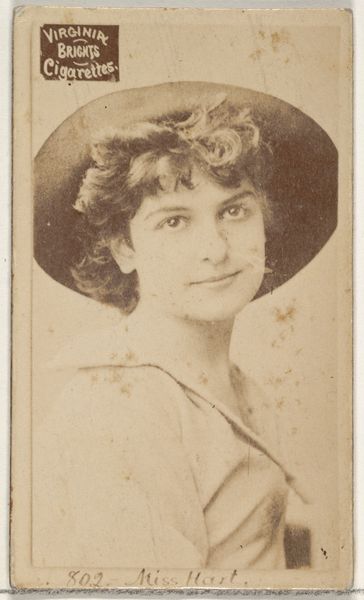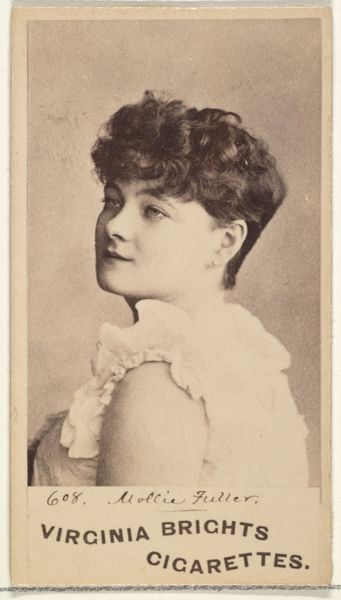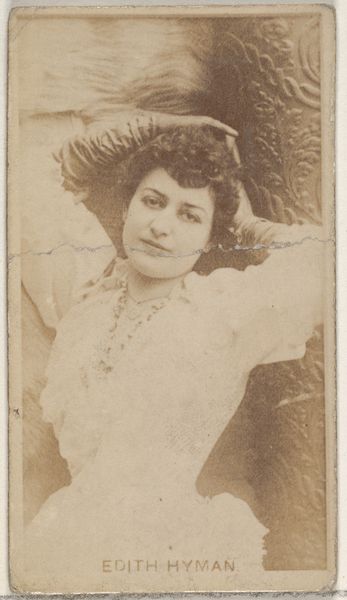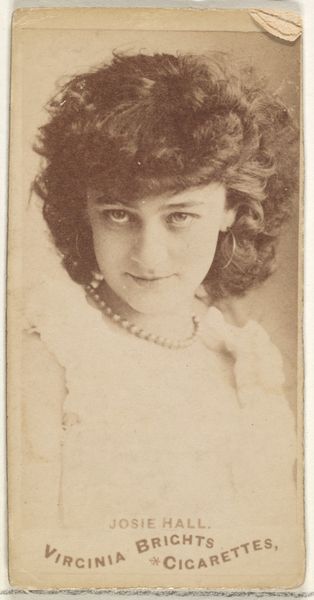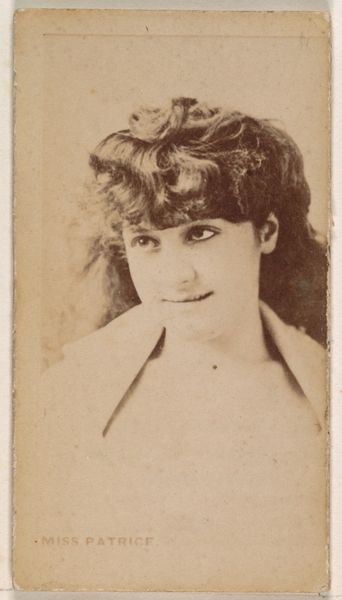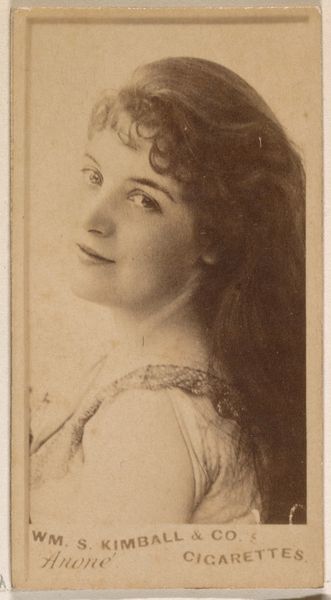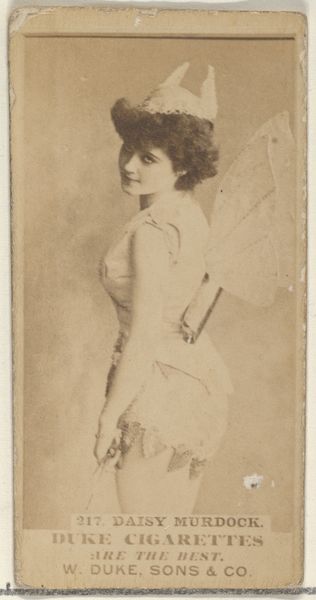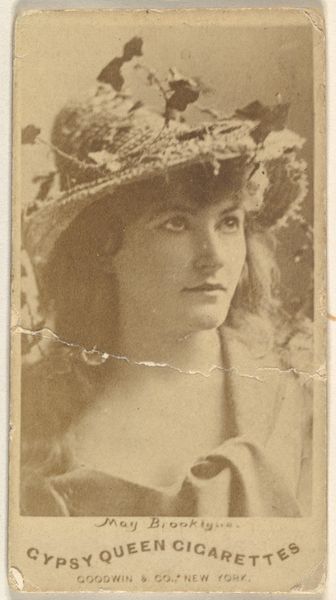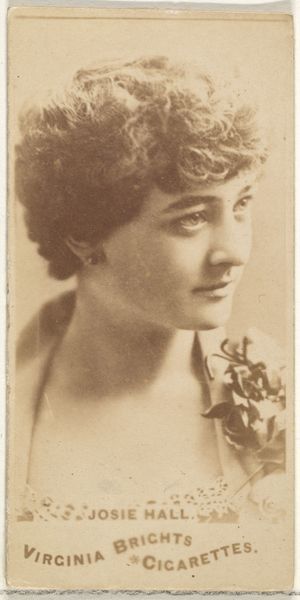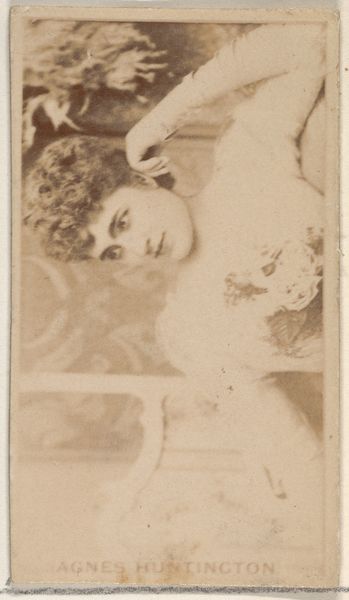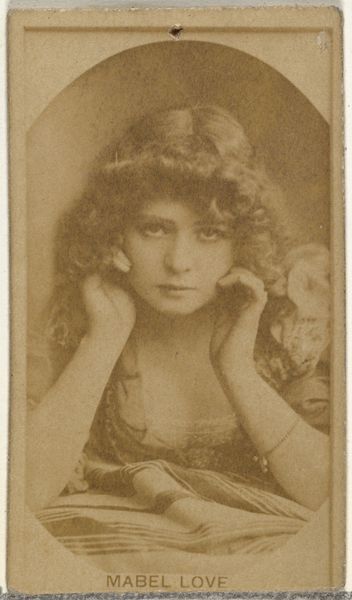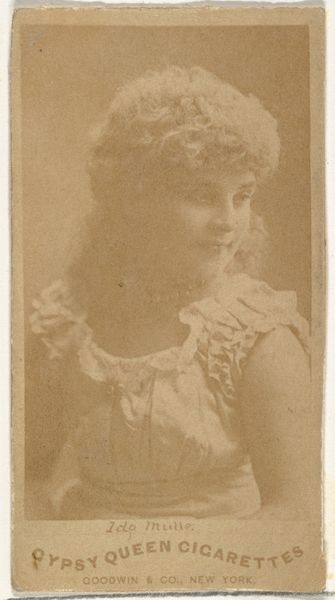
Card 704, Miss Morgan, from the Actors and Actresses series (N45, Type 2) for Virginia Brights Cigarettes 1885 - 1891
0:00
0:00
drawing, print, photography
#
portrait
#
drawing
# print
#
photography
#
genre-painting
Dimensions: Sheet: 2 3/4 x 1 3/8 in. (7 x 3.5 cm)
Copyright: Public Domain
Editor: Here we have a promotional card for Virginia Brights Cigarettes, dating from the late 1880s, featuring Miss Morgan. It's interesting how it's both a print and incorporates photography. It seems rather... straightforward, but maybe I'm missing something. What are your thoughts? Curator: Well, let's consider what this *is*: advertising. These cards weren't conceived as "high art" but rather as a material component of consumption, distributed with tobacco products. The value lies not just in the image itself, but in its purpose and accessibility. It was mass-produced for a popular audience. The availability and widespread distribution of this type of photographic print are perhaps the most significant aspects. Editor: So you're saying the value isn't so much in Miss Morgan's portrait, but in the mass-produced nature? Is the value only about distribution? Curator: Not only, but significantly. Consider the labor involved in producing these cards: from the photographers capturing the images, to the printmakers replicating them on a massive scale, to the factory workers packaging them with cigarettes. It highlights the industrial processes underpinning leisure and consumption at the time. Think of this portrait's purpose as an actor on a stage that includes the whole wide world of laborers in Ginter's factory. Editor: That’s interesting. So, it reframes how we typically see a portrait, not as a unique, artistic product, but part of an economic cycle. It shows how intertwined art and commerce really were – are – within material constraints. Curator: Precisely. It allows us to see the work through the lens of labor, materiality, and ultimately, the consumption habits of the late 19th century. Editor: I’m going to remember that. Thanks! Curator: My pleasure. It’s important to always consider the larger industrial, manufacturing contexts surrounding works like these.
Comments
No comments
Be the first to comment and join the conversation on the ultimate creative platform.

